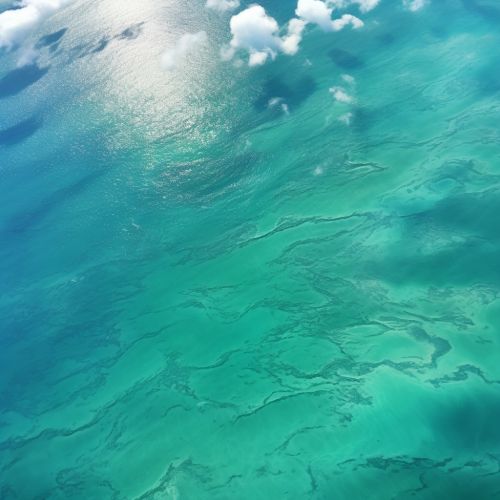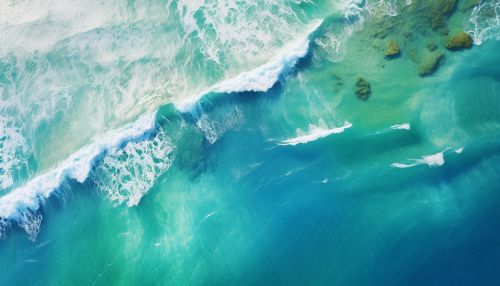Ocean Fertilization
Overview
Ocean fertilization is a form of geoengineering that involves the introduction of nutrients to the upper ocean layer to stimulate phytoplankton growth and enhance the ocean's capacity to absorb carbon dioxide from the atmosphere. The primary nutrients used in ocean fertilization are iron and nitrogen compounds. The process is based on the principle that phytoplankton, tiny marine plants, absorb carbon dioxide during photosynthesis and convert it into organic matter. When these organisms die, they sink to the ocean floor, effectively sequestering the carbon.


Process and Mechanisms
The process of ocean fertilization begins with the introduction of nutrients, typically in the form of iron or nitrogen compounds, into the upper layer of the ocean. This is usually done by ship, although aerial delivery methods have also been proposed. The nutrients stimulate the growth of phytoplankton, microscopic marine plants that form the base of the ocean food chain.
Phytoplankton utilize the process of photosynthesis to convert sunlight, carbon dioxide, and nutrients into organic matter. This process not only stimulates the growth of phytoplankton but also enhances the ocean's capacity to absorb carbon dioxide from the atmosphere. When phytoplankton die, they sink to the ocean floor, taking the absorbed carbon with them. This process is known as the biological pump and is a key mechanism in the global carbon cycle.
Potential for Carbon Sequestration
The potential for ocean fertilization to sequester carbon and mitigate climate change has been the subject of extensive scientific research. Studies have shown that the introduction of iron into iron-deficient regions of the ocean can stimulate phytoplankton blooms, leading to increased carbon uptake. However, the efficiency of carbon sequestration and the long-term impacts on marine ecosystems remain uncertain.
Ecological Impacts
While ocean fertilization has the potential to sequester carbon, it also has potential ecological impacts. The introduction of nutrients can alter marine ecosystems, potentially leading to harmful algal blooms and changes in species composition. There are also concerns about the potential for increased ocean acidification and the impacts on marine life, particularly shell-forming organisms.
Legal and Regulatory Issues
Ocean fertilization activities are subject to international law and regulation. The London Convention and Protocol and the Convention on Biological Diversity have adopted resolutions that effectively prohibit large-scale ocean fertilization activities except for legitimate scientific research. These regulations reflect the scientific uncertainty and potential risks associated with ocean fertilization.
Research and Field Experiments
Despite the regulatory restrictions, several research and field experiments have been conducted to study the effects of ocean fertilization. These include the IronEx and SOFeX experiments, which demonstrated that the introduction of iron can stimulate phytoplankton blooms. However, these experiments also highlighted the complexity of marine ecosystems and the challenges in predicting and managing the impacts of ocean fertilization.
Future Prospects
The future of ocean fertilization as a geoengineering strategy is uncertain. While it has the potential to sequester carbon and mitigate climate change, there are significant scientific, ecological, and regulatory challenges that need to be addressed. Further research is needed to fully understand the impacts and effectiveness of ocean fertilization and to develop strategies to manage potential risks.
